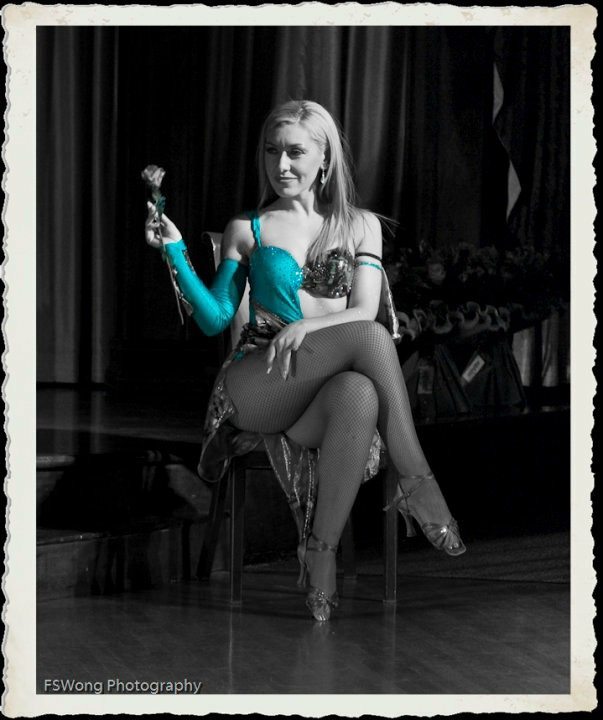Argentine Tango Toronto Dance School Explains Lessons Explains Part 2 Prior to the 1990s, Argentine Tango was taught with a didactic method; teaching tango by have students copy examples shown by the instructor. Emphasis was not given to how or why movement was done a certain way. Starting in the 1990s in Buenos Aires, the Tango Investigation Group (later transformed into the Cosmotango organization) founded by Gustavo Naveira and Fabian Salas applied the principles of dance kinesiology from modern dance to analyze the physics of movement in Argentine tango. Taking what they learned from this analysis they then began to explore all the possibilities of movement within the framework of Argentine Tango. From the work of these founders of the Tango Nuevo movement, there was shift in all styles of tango away from teaching what to dance toward teaching how to dance.
Argentine Tango Toronto Dance School Explains Lessons Part 1
Best Toronto Dance School Tango Dance Lessons Explains Part 1
Argentine Tango Toronto Dance School Explains Lessons – Best Tango Dance Lessons Toronto
- Though widely referred to as a tango style outside of Argentina, Tango Nuevo is not considered a style of dancing tango by the founders of the movement.
- It refers only to the method of analysis and teaching developed through the application of the principles of dance kinesiology to Argentine Tango. In 2009, Gustavo Naveira published an essay New Tango in which he states, “There is great confusion on the question of the way of dancing the tango: call it technique, form, or style. The term tango nuevo, is used to refer to a style of dancing, which is an error. In reality, tango nuevo is everything that has happened with the tango since the 1980s.
- It is not a question of a style… The words tango nuevo express what is happening with tango dancing in general; namely that it is evolving.”[36] Therefore, as the Gustavo Naveira and other founders of the Tango Nuevo movement have said, all styles of tango, which have now been influenced by the analysis of the dance, are all Tango Nuevo.
- Despite the insistence by the founders of the Tango Nuevo movement that it is not a single style, it has become an accepted term by many that it is a separate and distinct style of tango.
- Practitioners of tango nuevo are Gustavo Naveira, Norberto “El Pulpo” Esbres, Fabian Salas, Esteban Moreno, Claudia Codega, Sebastian Arce, Mariana Montes, Mariano ‘Chicho’ Frumboli, Homer and Cristina Ladas, Arne Herrem and Hanne Line, and Pablo Veron. All of these dancers have highly individual styles that cannot be confused with each other, yet are all referred to by many as the tango nuevo style.
Tango traditional
- A very pure and early form of tango, on base as walking rhythmically, not on the beat but with rhythm.
Tango de fantasia – Argentine Tango Toronto Dance School Explains Lessons
- This style is settled in the years 40 to 50. It refers on music, dance and dresses.
- The term tries to describe all tangoform, which is different of the traditional one: In dance couples added little sits and fast footwork, doing fantasies as popular people named it.
- The men’s suit with a white border is named traje de fantasia. In music Osmar Hector Maderna[37] got named tango de fantasia due of his arrangements which conceiveed fancy solos.
- In Argentine folklore at the same time, people fix a similar expression to describe non-traditional folklore with the name folklore de projeccion.
Tango acrobatico – Argentine Tango Toronto Dance School Explains Lessons
- Here acrobatic movements are performed to Tango music. A way of dancing with influences further than Ballett as Modern Dance, Gymnastic, Dance on Ice, Jazz, Circus, Acrobatics and Contact Improvisation with lifts, and figuers of effect.
- First this form is created by Eduardo Arquimbau in Forever Tango to interpret Tango music by non Tangodancers Miriam and Sandor in the Show Forever Tango.[38][39] Sandor was a member of a circus family and knew how to do circus and acrobatic acts.
- This Eduardo Arquimbau uses to get a new performance.
- The music they danced then was Tus ojos del cielo (Volumen 2 of the CD Forever Tango, on the cover the foto of Miriam). This dance form has been copied later on by many young dancers on stage.
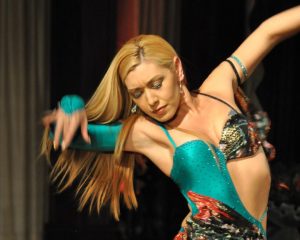
Argentine Tango Toronto Dance School Explains Lessons
Show or tango de escenario – Argentine Tango Toronto Dance School Explains Lessons
- Show tango, and Tango de Escenario (stage tango) is a more theatrical form of Argentine tango developed to suit the stage.
- Movement has to fit on stage forms as diagonals, centre, fronts, light settings, etc.
- Not necessary but sometimes it includes embellishments, acrobatics, and solo moves.
- Indeed all styles can be performed on stage, only than has to fit with stage necessities.
- Stage tango can be improvised in parts but in due to fit general choreographic movements a whole choreography or parts of it have to be fixed.
- Tango has to be led even on stage, as all forms of Argentine Tango.
- Otherwise the couple is missing the main principle of this dance and the tango tipic intime connection is missing.
- This only appears, when he is filling his role (leading) and she hers. Having a Choreography does not mean that he is free of his leading role, he has to lead in order to produce the elements and place them in space and music.
- This is as important on stage as in a social dance place, but often not taken seriously.
- Tango on stage has not been confounded with Tango de Fantasia or tango acrobatico.
Continue with Argentine Tango Toronto Dance School Explanation of the Lesson Walking
- One very important characteristic of Argentine tango is the walk outside of the legs of the follower.
- The inside walk belongs originally to the American Tango. It is seen in Argentine Tango, but it does not belong to it originally[citation needed].
- Another difference is that the leader may freely step with his left foot when the follower steps with her left foot. In English, this is sometimes referred to as a “crossed” (e.g. “walking in the crossed system”) or “uneven” walk in contrast to the normal walk which is called “parallel” or “even.” In ballroom tango, “crossed system” is considered incorrect unless the leader and follower are facing the same direction[citation needed].
- Furthermore, the flexibility of the embrace allows the leader to change his weight from one foot to another while the follower’s weight remains unchanged.
- This is another major difference with ballroom tango, where a weight change by one partner usually leads to a weight change by the other.
- The nomenclature originated with the Naveira/Salas “Investigation Group.” Early on, they used ‘even/uneven’ to describe the arrangement of legs in the walk (or turn).
- By the mid-1990s, they began using ‘parallel/crossed’ and later ‘normal/crossed’. In dance the changing of feet is named contrapaso, or “contra-step”. This change can be made off or on the normal beat.
Embrace – Argentine Tango Toronto Dance School Explains Lessons
- A striking difference between Argentine tango and ballroom tango is in the shape and feel of the embrace.
- Ballroom technique dictates that partners arch their upper bodies away from each other, while maintaining contact at the hip, in an offset frame.
- In Argentine tango, it is nearly the opposite: the dancers’ chests are closer to each other than are their hips, and often there is contact at about the level of the chest (the contact point differing, depending on the height of the leader and the closeness of the embrace). In close embrace, the leader and the follower’s chests are in contact and they are dancing with their heads touching or very near each other.
- In open embrace, there can be as much space as desired between the partners, but there should always be complete contact along the embracing arms to give optimum communication.
- Since Argentine tango is almost entirely improvisational, there needs to be clear communication between partners.
- Even when dancing in a very open embrace, Argentine tango dancers do not hold their upper bodies arched away from each other; each partner is over their own axis. Whether open or closed, a tango embrace is not rigid, but relaxed, like a hug.
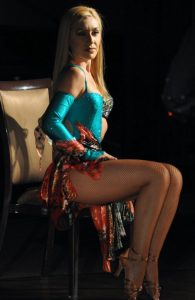
Argentine Tango Toronto Dance School
Figures – Argentine Tango Toronto Dance School Explains Lessons
- Main article: Figures of Argentine tango
- Unlike the majority of social dance, Argentine tango is not a set step, but a completely improvised dance combining various elements in a spontaneous manner, as determined by the lead.
- To be able to improvise, the dancer needs to learn the lead and implementation of the different single elements of Tango, so they can be produced later by leading appropriately in space and music.
- The elements are just a few as caminar (walk), cruce (cross), ochos (figure-eight), ganchos (leg hooks), giros (turns), contragiros (turns in the other direction), sacadas (displacements), boleos (this expression comes from boleadoras, balls linked with cords, thrown to hunt animals), llevadas de pie (moving foot by foot), cortes (cuts), and quebradas (breaks).[6][7] Well-known and simple combinations are called figura basica (basic figures), especially when they contain just one element.
- Some of the elements are named as a figure.
Figures of Argentine tango
- Argentine tango is an improvised dance combining various elements in a spontaneous manner.
- To be able to improvise, the dancer needs to learn the lead and implementation of the different single elements of tango, so they can be produced later by leading appropriately to the music.
- There are also elements of the dance such as “codigos” (codes) of Argentine tango such as invitation by eye contact to a woman to dance.
- In 2010 there exists as many as 200 instructional DVDs discussing e100pxlements of Argentine tango dance.[1] These include titles devoted to tango technique and basics[2][3] tango nuevo[4][5][6][7] milonguero style[8][9][10] and various elements of the dance such as giros.[11] There are many guides and dictionaries to tango terminology on the internet.[12] Tango terminology is described in several books.[13][14][15][16][17][18]
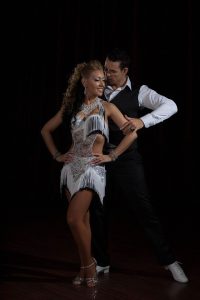
Best Argentine Tango Toronto School – Argentine Tango Dance Lessons Explains Part 1
ttp://www.latinenergydance.com/argentine-tango-toronto-technique-lessons/
Body position and basic steps – Argentine Tango Toronto Dance School Explains Lessons
Effective lead and elegant following depends on proper position of feet, hips, and torso of the leader and the follower.
- On and off axis
- Position-related concepts of Argentine tango are axis and off-axis positions.
- Body position in which legs are approximately perpendicular to the floor is called ‘axis’ and there are two axis positions associated with one of two legs.[3] Off-axis positions are called apile (apilado, carpa, volcada) or colgada.[4] The center of balance moves outside one’s body in case of the off-axis moves.
Embrace and styles of Argentine Tango Toronto Dance School Explains Lessons
- Argentine tango dancing consists of a variety of styles that developed in different regions and eras and in response to the crowding of the venue and even the fashions in clothing.
- It is danced in an embrace that can vary from very open, in which man and woman connect at arms length, to very closed, in which the connection is chest-to-chest, or anywhere in between.
- Styles of dance are not predefined by the embrace itself and many figures of tango salon style are danced in an open embrace, it is also possible to dance tango nuevo in close V-shape embrace.
- The milonguero (apilado) style is an exception; its close embrace without V-shape and emphasis on maintaining this embrace throughout the dance predetermines range of possible movements and their shape.
Walk and salidas in Argentine Tango Toronto Dance School Explains Lessons all details
- Walking in a cross system is defined as when the leader steps with his right leg forward and the woman steps with her right leg back or when the leader steps with his left leg forward and the woman with her left leg back. Walking in a parallel system is defined as when the leader steps with his left leg forward and the woman steps with her right leg back or when the leader steps with his right leg forward and the woman with her left leg back. In ballroom tango, “crossed system” is considered incorrect unless the leader and follower are facing the same direction.
- Furthermore, in Argentine tango, the leader can change his weight from one foot to another while the follower’s weight remains unchanged.
- This is another major difference with ballroom tango, where a weight change by one partner leads to an automatic weight change by the other.
- The cross system and parallel system walk nomenclature originated with the Naveira/Salas “Investigation Group.” Early on, they used ‘even/uneven’ to describe the arrangement of legs in the walk or turn. By the mid-1990s, they began using ‘parallel/crossed’ and later ‘normal/crossed’.
- In dance, the changing of feet is named contrapaso, or “contra-step”. This change can be made off or on the normal beat.
Walking System of Argentine Tango Toronto Dance School Explains Lessons
- Baldosa (tile) or cuadrado (square) is a six-step figure similar to the ballroom box step except the man starts with his right foot, then steps back, side, forward, forward, side, feet together; the baldosa is the basic step of milonga. This baldosa is similar to eight count basic with the exception of the cross.
- Some Argentine tango teachers teach complex figures but break them down into simpler parts.
- Subsequently they teach students how to improvise their own figures.
- Beginner classes may include caminada – combination of caminar (walk), cross, and ochos.
- The beginning part of a figure, its starting-point, is called salida (exit or beginning – as in “beginning of a journey”).
- The end part of a figure is called resolucion. Combination of the salida, a walk, the cross of the lady and the resolucion is called basic step (paso basico, la base, salida simple).
Thus, an Argentine tango figure is the pattern of salida, combination of elements, and resolucion. - This makes for flexible, ever-changing patterns. It gives leader an exceptional opportunity to improvise, and in part makes the Argentine tango unique in the dance world.
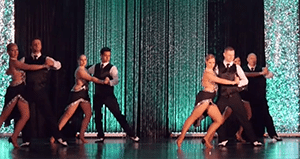
Best Argentine Toronto Tango School – Argentine Tango Dance Lessons Explains Part 2
https://www.latinenergydance.com/argentine-tango-dance-school-toronto/
Toronto Dance Shows Booking Request | LATIN ENERGY Dance Company
Argentine Tango Toronto Technique Lessons | LATIN ENERGY Dance Company
Argentine Tango Toronto Lessons Toronto Style Technique Classes World Champ
Related articles

